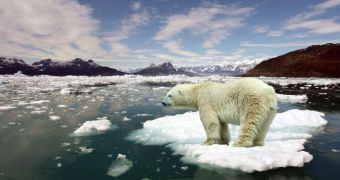Last Sunday, we talked about climate change, i.e. what it is and why we should be worried about it. As promised, the time has now come to discuss its brother-in-arms, global warming.
Mind you, I am not trying to make you feel as if you were in high school, and I have absolutely no intention to make you sit for an exam once you are done reading this editorial.
I just think that, since these two phenomena are presently making headlines about as often as Oscar-winning celebrities, it might not be such a bad idea to take the time to learn what they are all about and why researchers keep warning us about them.
These being said, let us waste no more time (it's the weekend, and I can only assume you have quite a lot of things to keep you busy) and proceed to explaining global warming, its causes and its effects.
What Exactly Is Global Warming?
Specialists tell us that global warming is basically an increase in the average temperature documented on a global scale over a given period. Specifically, an increase in the average temperature of our planet's climate system.
What's really cool about global warming (if I may be so bold as to use the word “cool” to refer to a phenomenon that is messing up our dear old Earth) is that, contrary to what some might think, it does not exclude really cold periods and harsh winters.
Hence the fact that, despite the extremely low temperatures that the United States endured at the time when it was hit by the polar vortex, no scientist in their right mind said that this was proof enough that global warming was make-belief.
This is because, when it comes to this phenomenon, all that matters is that, when all is said and done, average temperatures on a global scale are found to gradually increase as the years go by.
Scientists who have been monitoring temperatures around the world for decades tell us that, between the years 1906 and 2005, the global average surface temperature increased 0.6 to 0.9 degrees Celsius (1.1 to 1.6 degrees Fahrenheit).
What's more, they say that the rate at which the global average surface temperature is increasing has doubled over the past 50 years. So yes, global warming is real, and it is happening as I type and you read.
How Does Global Warming Work?
For those who don't know this by now, our planet owes its people- and wildlife-friendly temperature to the Sun, which sends solar radiation our way. Of the sunlight that reaches our planet, about 30% is reflected back into space by clouds and ice.
Of the 70% that does make it through, some is absorbed by lands and oceans, and some bounces back into the atmosphere and is absorbed by it. It is this solar energy that lands, oceans, and the atmosphere take in that heats our planet.
Studies have shown that Earth's atmosphere owes its ability to absorb sun energy to the water vapors and the greenhouse gases such a carbon dioxide and methane that it contains. So yes, there is such a thing as a natural greenhouse effect, and it is quite beneficial for our planet.
In fact, it is said that, were it not for the atmosphere's absorbing solar radiation, our planet's temperature would revolve around minus 18 degrees Celsius (0 degrees Fahrenheit). Otherwise put, we would pretty much be living in Narnia.
Where Does Pollution Factor In?
The natural greenhouse effect might be good for life on Earth, but the enhanced greenhouse effect that human society need be blamed for is not all that great, simply because it stands to make our planet a tad too warm than we would like it to be.
By burning loads of dirty fuels for energy and also by chopping down forests, which function as greenhouse gases sinks, people have managed to up atmospheric concentrations of various greenhouse gases and upset the natural balance of our planet.
Specifically, it is said that, since 2009 until present day, carbon and methane levels in Earth's atmosphere have increased by about 38% and 148%, respectively. This means that the atmosphere is absorbing more solar radiation and sending more heat our way. Hence global warming.
So Why Should We Worry?
A future where people can wear shorts and T-shirts to work every day of the year might sound like something to look forward to, but this is not really the case. This is because with global warming come the melting of the ice caps, rising sea levels, and changes in climate patterns around the world.
All these side effects of global warming have the potential to impact on public health, agricultural practices and food security, security, and even economy, and they are the reason why scientists keep badgering up that we would do well to limit greenhouse gas emissions while we still have the chance.

 14 DAY TRIAL //
14 DAY TRIAL //